GALLERY
Click to enlarge

Wax Figures

Mexican carved coconut banks
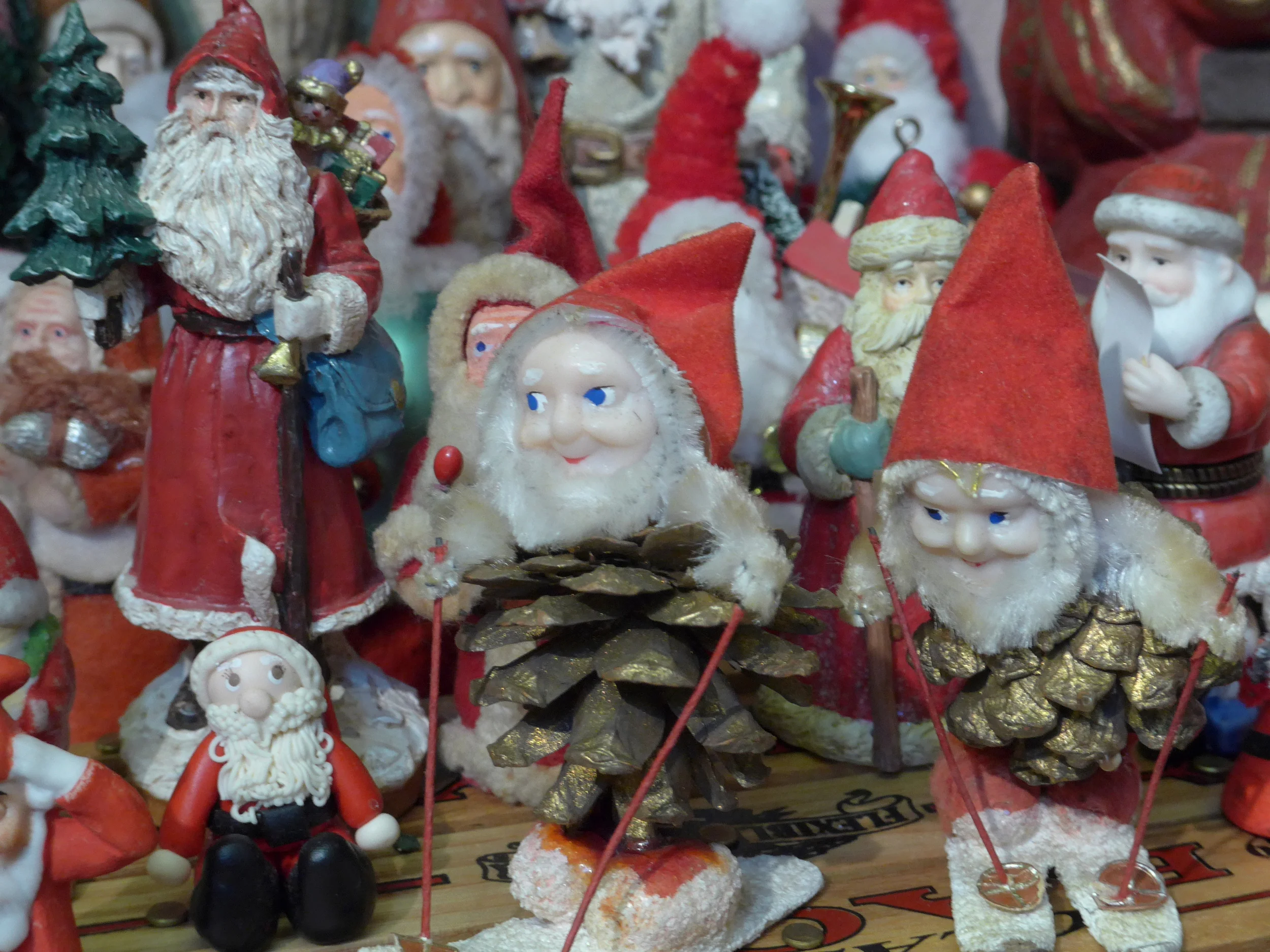
Pinecone skiing Santas
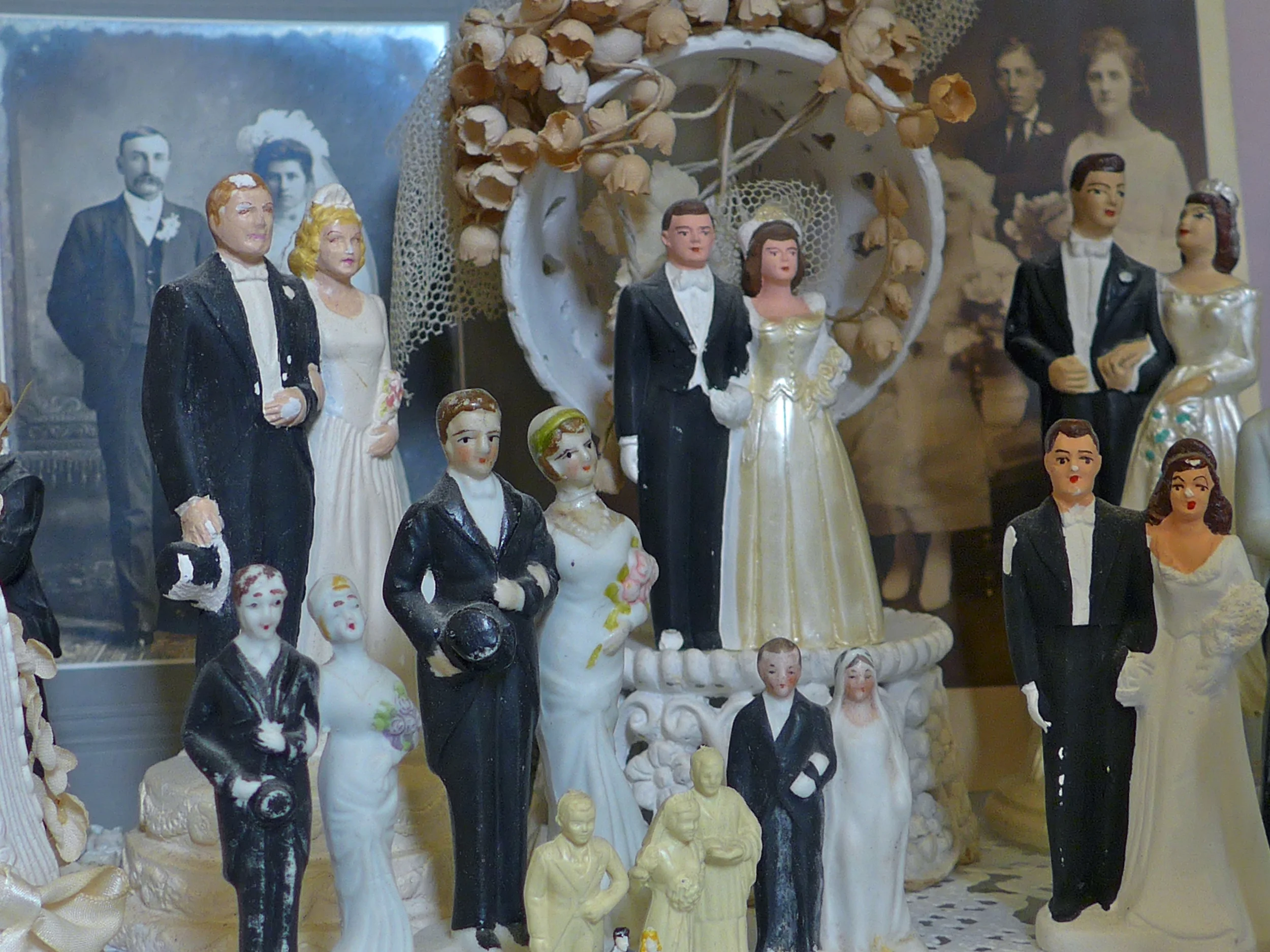
Wedding Cake Toppers
A practice made popular in the United States in the 1950s, these traditionally black-and-white figures atop a wedding cake feature a bride and groom locked together in formal attire to symbolize togetherness and commitment.

Vintage Anthropomorphic Objects

Silk & Gold Thread Wedding Sari from Jaipur
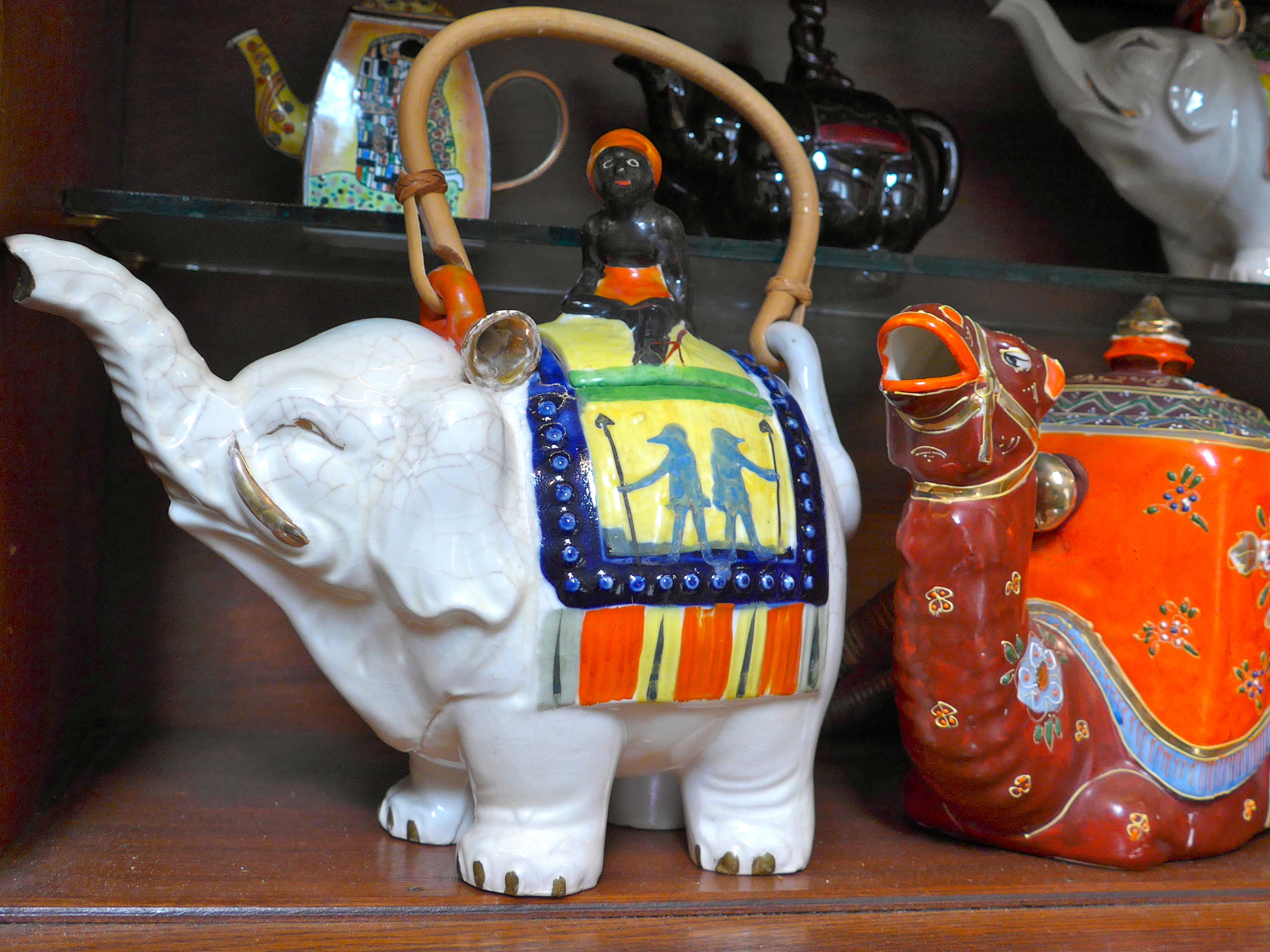
Zoomorphic Teapots

Vintage Tin Toys
Whether you wind them up, use friction to see them roll, spin them, have pretend tea parties or use them to house your money, tin toys are classic, timeless, vintage. They are colorful and durable. Tin toys have been manufactured widely since the mid-1800s, and were popular in the United States in the 1920s and 30s and into the 1950s. Many tin toys were manufactured in German, Japan, England, and France--though the USA got into the game, as well.

Mexican straw pictures

Depictions of the Virgin

Wind-up tin circus toys

Several black cats

More wind-up tin circus toys

Polychrome carved wooden cats with porcelain mother and kittens behind

Papier-mâché Santa head candy container lid

Black cat hand puppet next to Victorian floral tile fireplace surround

Antique Shell Art
Shell art, or shellcraft, uses the natural beauty and color of seashells to create decorative objects, such as frames, jewelry, and figurines.

Huichol Indian beaded animal effigies

Ocumichu Mexican clay devil figures

Anthropomorphic Objects - Tomato Faces
Whimsical and irresistibly collectible, vintage anthropomorphic ceramics from the 1950s and 1960s feature silly and smiling faces of bright-colored fruit, vegetables, and other inanimate objects, such as eggplants, bell peppers, ears of corn, apples, eggs, and tomatoes. Often found in kitchens, these cheerful ceramics were used as salt and pepper shakers, creamers and pitchers, cookie jars, tea pots, canisters, and more. The PY Japan tomato faces pictured were produced for the US by a company called Miyawo, located in Yokkaichi City, Japan.

Miniature Christmas Village
In the mid-20th century, it became popular to decorate the hearth or table with a miniature Christmas village, or a "putz", often using mass-produced cardboard cut-out houses covered in glitter. These colorful, light-weight structures often had holes in the back through which Christmas lights could be placed for illumination. By the late 20th century, ceramic houses became popular--but the cardboard versions remain fun to collect and build. These villages are festive and quaint and cry out "Christmas!"

Wedding cake topper and photo ensemble

A group of Santas

Many spinning tops

Patricia Brown’s paintings and brushes

Mexican pottery objects

Dolls from around the world
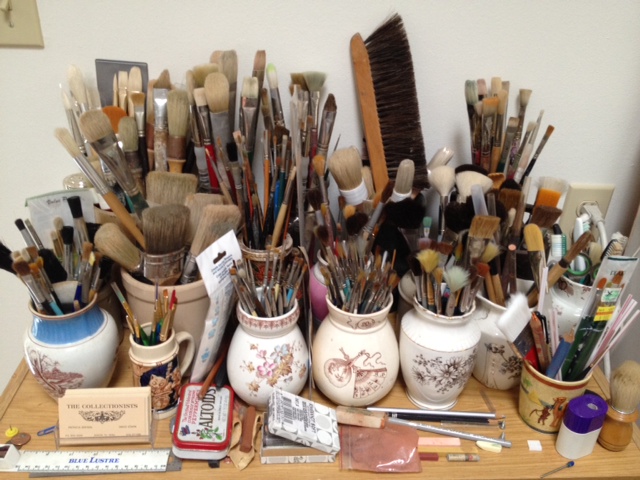
Patricia Brown’s paint brushes clean and ready

Refrigerator magnets

Accordions and bandoneons with carved wooden musicians and one porcelain rabbit
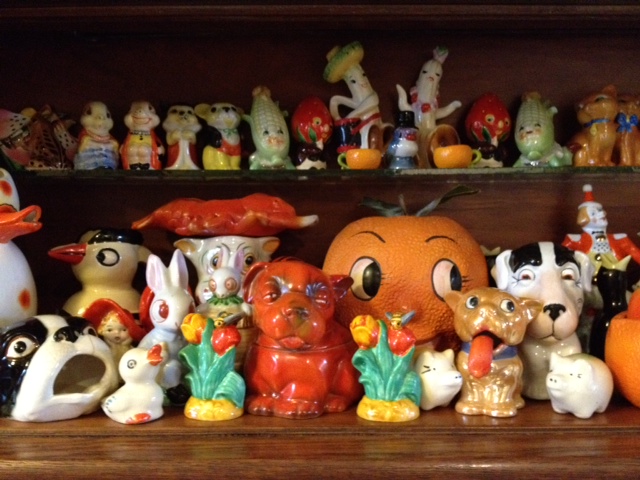
Porcelain tchotchkes and one anthropomorphic orange cookie jar































